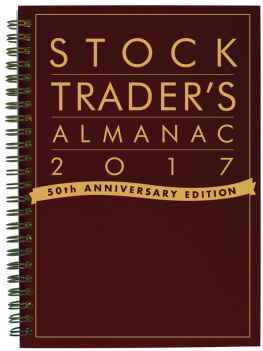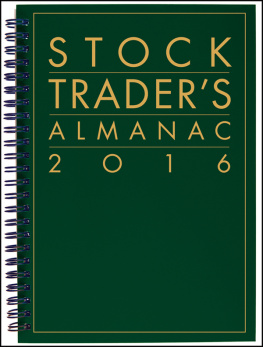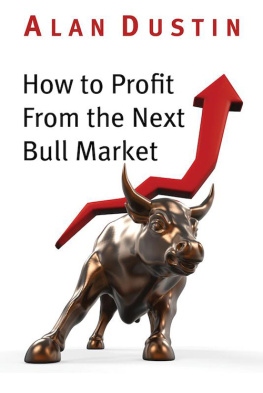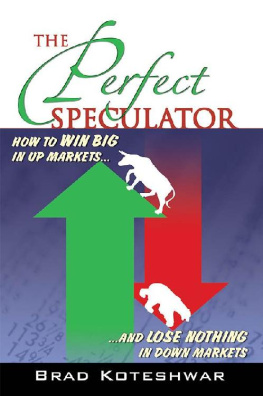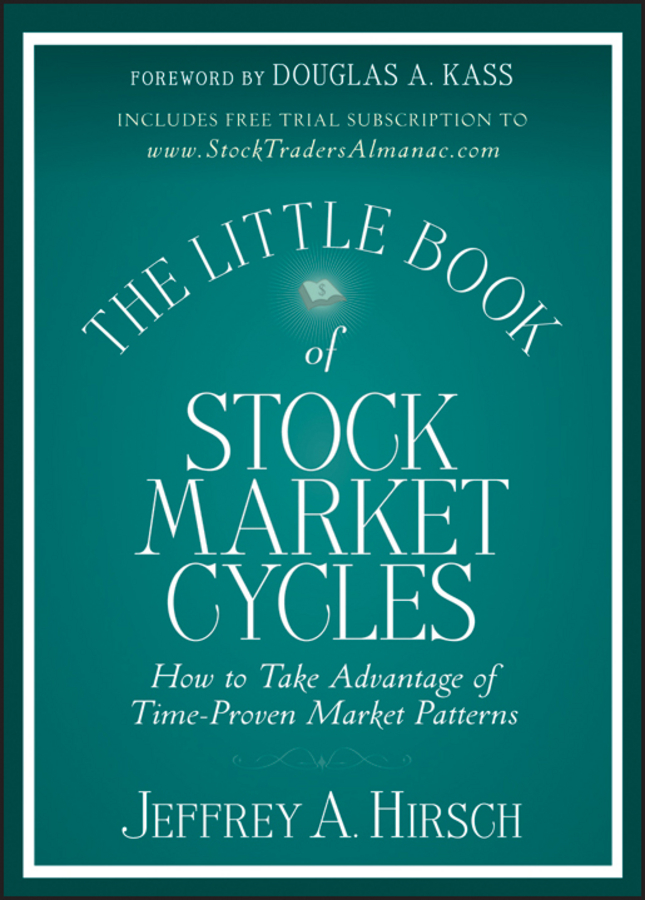Contents

Little Book Big Profits Series 
In the Little Book Big Profits series, the brightest icons in the financial world write on topics that range from tried-and-true investment strategies to tomorrows new trends. Each book offers a unique perspective on investing, allowing the reader to pick and choose from the very best in investment advice today.
Books in the Little Book Big Profits series include:
The Little Book That Still Beats the Market by Joel Greenblatt
The Little Book of Value Investing by Christopher Browne
The Little Book of Common Sense Investing by John C. Bogle
The Little Book That Makes You Rich by Louis Navellier
The Little Book That Builds Wealth by Pat Dorsey
The Little Book That Saves Your Assets by David M. Darst
The Little Book of Bull Moves by Peter D. Schiff
The Little Book of Main Street Money by Jonathan Clements
The Little Book of Safe Money by Jason Zweig
The Little Book of Behavioral Investing by James Montier
The Little Book of Big Dividends by Charles B. Carlson
The Little Book of Bulletproof Investing by Ben Stein and Phil DeMuth
The Little Book of Commodity Investing by John R. Stephenson
The Little Book of Economics by Greg Ip
The Little Book of Sideways Markets by Vitaliy N. Katsenelson
The Little Book of Currency Trading by Kathy Lien
The Little Book of Stock Market Profits by Mitch Zacks
The Little Book of Big Profits from Small Stocks by Hilary Kramer
The Little Book of Trading by Michael W. Covel
The Little Book of Alternative Investments by Ben Stein and Phil DeMuth
The Little Book of Valuation by Aswath Damodaran
The Little Book of Emerging Markets by Mark Mobius
The Little Book of Hedge Funds by Anthony Scaramucci
The Little Book of the Shrinking Dollar by Addison Wiggin
The Little Book of Bulls Eye Investing by John Mauldin
The Little Book of Stock Market Cycles by Jeffrey Hirsch
Copyright 2012 by Jeffrey Hirsch. All rights reserved.
Published by John Wiley & Sons, Inc., Hoboken, New Jersey.
Published simultaneously in Canada.
No part of this publication may be reproduced, stored in a retrieval system, or transmitted in any form or by any means, electronic, mechanical, photocopying, recording, scanning, or otherwise, except as permitted under Section 107 or 108 of the 1976 United States Copyright Act, without either the prior written permission of the Publisher, or authorization through payment of the appropriate per-copy fee to the Copyright Clearance Center, Inc., 222 Rosewood Drive, Danvers, MA 01923, (978) 750-8400, fax (978) 646-8600, or on the Web at www.copyright.com . Requests to the Publisher for permission should be addressed to the Permissions Department, John Wiley & Sons, Inc., 111 River Street, Hoboken, NJ 07030, (201) 748-6011, fax (201) 748-6008, or online at www.wiley.com/go/permissions .
Limit of Liability/Disclaimer of Warranty: While the publisher and author have used their best efforts in preparing this book, they make no representations or warranties with respect to the accuracy or completeness of the contents of this book and specifically disclaim any implied warranties of merchantability or fitness for a particular purpose. No warranty may be created or extended by sales representatives or written sales materials. The advice and strategies contained herein may not be suitable for your situation. You should consult with a professional where appropriate. Neither the publisher nor author shall be liable for any loss of profit or any other commercial damages, including but not limited to special, incidental, consequential, or other damages.
For general information on our other products and services or for technical support, please contact our Customer Care Department within the United States at (800) 762-2974, outside the United States at (317) 572-3993 or fax (317) 572-4002.
Wiley also publishes its books in a variety of electronic formats. Some content that appears in print may not be available in electronic books. For more information about Wiley products, visit our web site at www.wiley.com .
ISBN 978-1-118-27011-0 (cloth); 978-1-18-28349-3 (ebk); 978-1-118-28485-8 (ebk); 978-1-118-28624-1 (ebk)
For Jennifer and our two boys, Samson and Nathaniel
Foreword
It might seem odd that a fundamentally oriented investor would write the Foreword for a book devoted to technical analysis. After all, many fundamental investors view technical analysis as nothing more than fortune-telling, and technical analysts as wizards who should be locked up and kept away from the children (and investors/traders who behave like children). But here I am, a fundamental investor, doing just that.
The fact is that the business of investing is complicated. Think of it as a pyramid with each angle of the pyramid representing a different approachyouve got the fundamentals, valuation, and the technicals.
It is the influence on equities called the technicals that Jeff Hirsch captures so eloquently and succinctly in The Little Book of Stock Market Cycles.
Jeffs thoughtful book takes a cue from Winston Churchill, who once wrote that the farther back you can look, the farther forward you are likely to see.
As Jeff writes, the lessons of stock market history are invaluable. The study of patterns from the past makes future trends clearer, just as the avoidance of history makes them potentially lethal to your investments well-being.
Mr. Market is not an easy guy to get to know. Analysis of market history and the rhythm of financial cycles isnt a simple task, and especially not the way Jeff does it. Determining the roles that human behavior, holidays, elections, seasons, and the calendar play in influencing the stock markets direction requires careful observation and critical thinking. Even the role of peace and war is fair game in Jeffs analysis.
And then there is Jeffs outlandish May 2010 prophesy of a super boom in stocksin which he feels the Dow Jones Industrial Average may rise to 38,820 by 2025!
Learn why Jeff is ringing in a new bull market beginning in the 20172018 period. His conviction is high and his reasoning appears sound.
In The Little Book of Stock Market Cycles , Jeff presents a commonsense message and invaluable lessons for how to take advantage of time-proven market patterns. Both individual and institutional investors should take notice.
After all, those who cannot remember the past are condemned to repeat it!
Douglas A. Kass
Seabreeze Partners Management Inc.
Introduction
There is no magic formula to make trading or investing easy. Nothing can replace research, experience, and a healthy dose of luck. There is, however, a methodology investors can employ to mitigate losses and enhance returns. Nineteenth century philosopher George Santayana once pronounced that Those who cannot remember the past are condemned to repeat it.
This is the cornerstone of my research for the Stock Traders Almanac , which was founded by my father Yale Hirsch in 1966. By analyzing and studying the markets from a historical perspective, modern-day market action and events can be put into historical context. Whether you are a short-term trader or a longer term investor, being aware of historical and seasonal patterns and tendencies is helpful and valuable.









